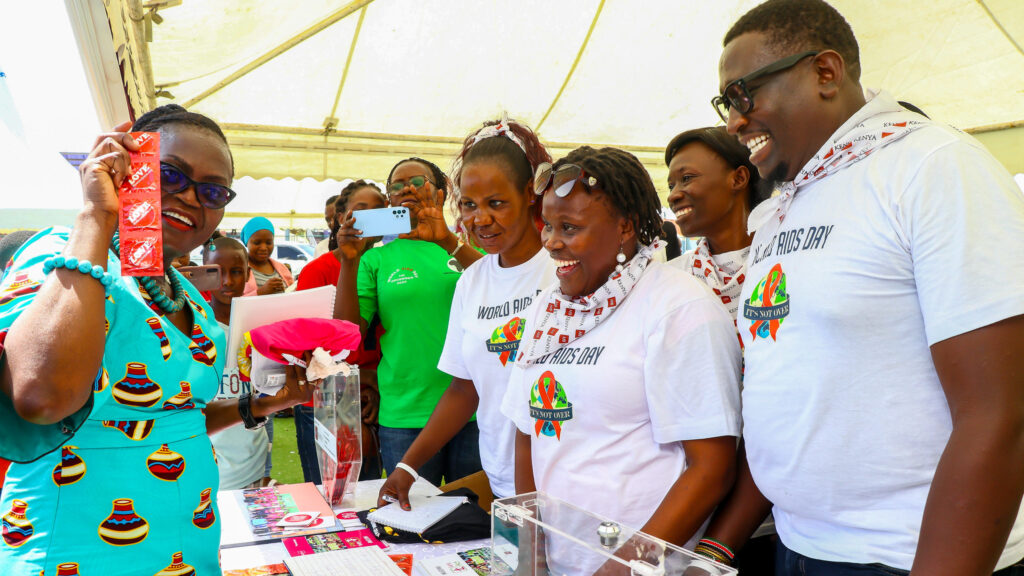
AIDS care agency urges urgent condom access reforms amid declining donor support » Capital News
NAIROBI, Kenya, Feb 14 – Despite over a million sexually transmitted infections (STIs) being acquired globally each day, Kenya continues to face major challenges in condom access, worsened by dwindling donor funding and high taxation.
Young people account for 56.8 per cent of all new infections, and 14 per cent of those in need of contraception cannot access it. Limited condom affordability and availability pose a serious public health risk.
To address this, the AIDS Healthcare Foundation (AHF) Kenya marked International Condom Day (ICD) on February 13 with events in Migori, Nairobi’s Mathare slums, and Kilifi.
The activities included free condom distribution, HIV and STI testing, youth-led discussions, roadshows, dance competitions, and talent showcases—all aimed at promoting condom use and access.
Speaking in Mathare, Anthony Kiplagat, Head of the HIV Programme in Nairobi County, stressed the need for targeted interventions among adolescents and young people.
“In Nairobi County, we have made significant strides in HIV programming, particularly in reducing new infections,” he said.
“However, we face a challenge among adolescents and young people aged 15 to 24, who account for 30 per cent of new HIV infections each year.”
Taxation remains a key barrier to condom access.
Although condoms are a proven, cost-effective method of preventing HIV, STIs, and unplanned pregnancies, they attract taxes as medical devices.
A 16 per cent Value Added Tax (VAT) and additional import duties increase the cost of condoms, making them less affordable.
Dr. Penninah Lutung, AHF Africa Bureau Chief, called for urgent action.
“Many Africans struggle to access condoms due to stockouts, high prices, and heavy taxation. We urge governments and stakeholders to remove these barriers, increase funding, and ensure free or affordable condoms reach everyone who needs them.”
Reduced donor funding
The commemoration comes at a time of reduced donor funding for HIV prevention.
In 2023 alone, donor contributions to HIV programmes dropped by US$358 million, forcing public health agencies to cut back on free condom distribution.
Kenya now faces an annual shortage of nearly 100 million condoms, further highlighting the risks of relying on donor support.
To tackle the funding and taxation crises, Dr. Samuel Kinyanjui, AHF Kenya Country Director, proposed a “whole-market approach” to condom distribution.
This strategy would establish a sustainable, government-led condom access system by balancing free distribution, affordable pricing, and commercial sales.
Dr. Kinyanjui emphasized that this model would reduce Kenya’s dependence on unpredictable donor support and make condoms accessible to all income groups.
“A whole-market approach is essential,” he said.
“We propose that 50 per cent, or 200 million condoms, be provided free and tax-exempt to lower-income individuals. Another 40 per cent, or 150 million condoms, should [be] socially marketed at low cost and taxed. The remaining 10 per cent, or 50 million condoms, can be sold in the premium market without government incentives.”
Dr. Naomi Kahoro, Regional Retention Programme Coordinator at AHF Kenya, highlighted the need to increase condom access for young women. She noted that preventing unwanted pregnancies helps girls stay in school, improving their future opportunities.
International Condom Day, observed annually on 13 February, promotes condom use as a key tool in preventing HIV, STIs, and unplanned pregnancies.
Through awareness campaigns, community-driven events, and policy advocacy, civil society organizations continue to push for affordable, accessible, and stigma-free condom use across the country.